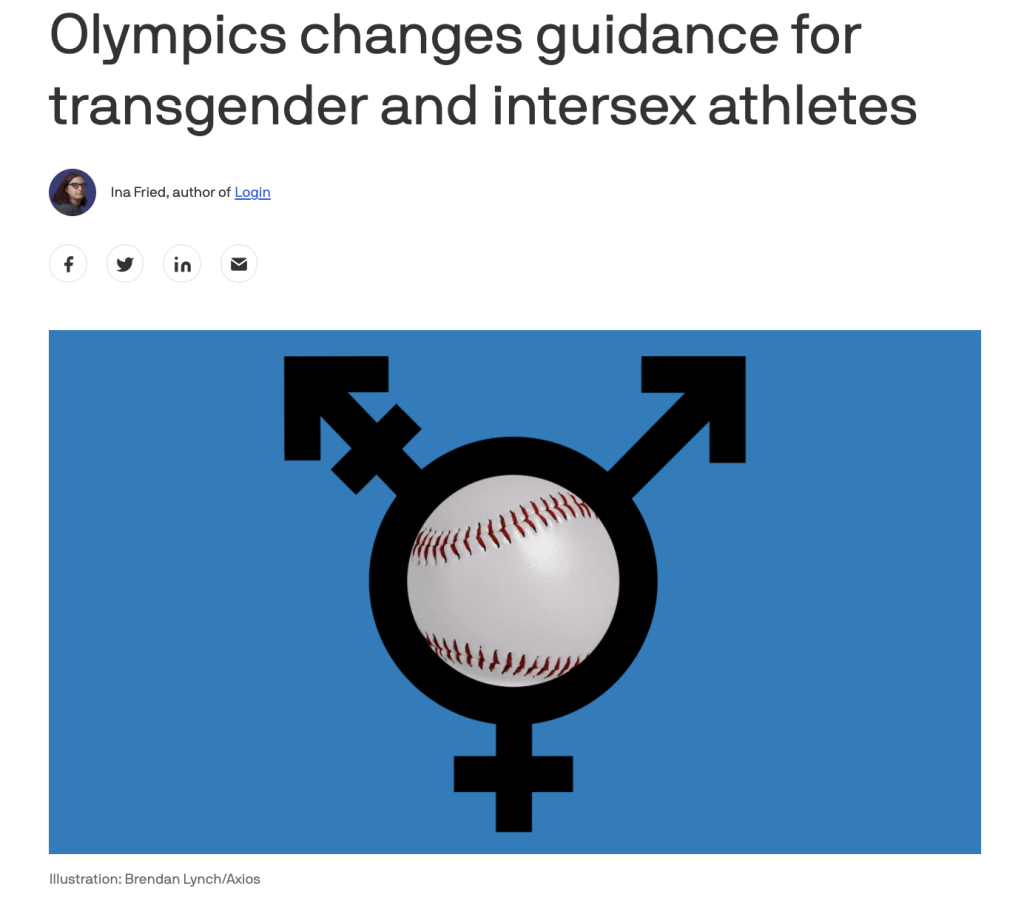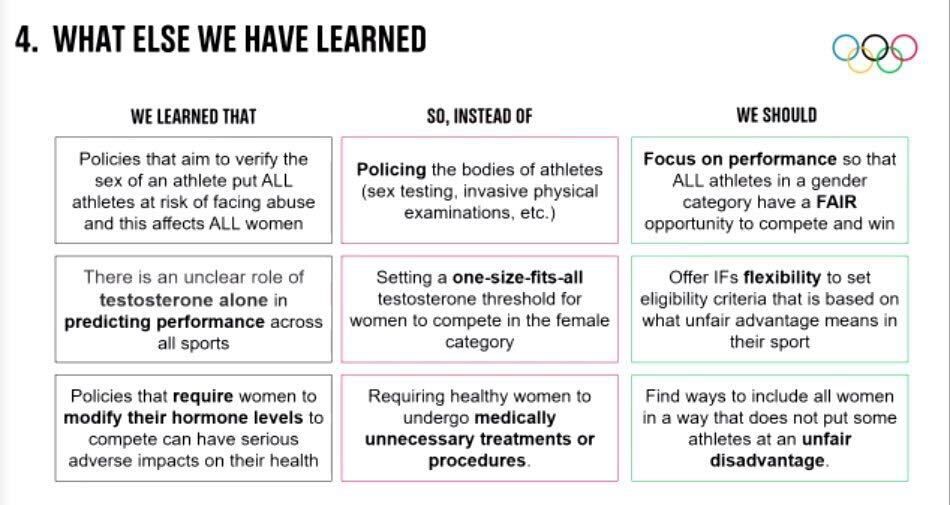
The International Olympic Committee on Tuesday announced a new framework for transgender athletes, as well as those born with intersex conditions that foregoes a “one-size-fits-all” approach in favor of encouraging each sport’s governing body to come up with appropriate policies.
Why it matters: The first openly transgender athletes competed in the Tokyo Olympics, 17 years after the IOC first set rules allowing for participation, while several female athletes saw themselves excluded from the Olympic Games on the basis of their natural testosterone levels.
Details: The new policy sets guidelines for each sport’s international governing body to consider when establishing policies on eligibility for trans athletes as well as for those born with intersex conditions.
- The guidelines encourage — but do not require — such governing bodies to avoid using unnecessary medical testing or procedures as part of determining eligibility.
- The framework also notes that there is not medical consensus that testosterone levels alone confer an unfair advantage to transgender or intersex athletes.
- The IOC also encourages decisions to be made based on evidence of an individuals’ advantage rather than judging based on an athlete’s appearance or identity.
Between the lines: Importantly, the framework notes that sex testing, genital inspections and other medical procedures put all athletes at risk of harm and abuse, not just trans, intersex and non-binary athletes.
Yes, but: The IOC’s new framework isn’t legally binding on the individual sport governing bodies, who remain free to set their own rules for eligibility.
The big picture: Most of the objections to trans participation in sports center on transgender women and the belief by some that trans women retain an unfair advantage even after taking hormones to lower their testosterone.
- The science on that is inconclusive, not to mention the fact that non-transgender women have a wide range of naturally occurring testosterone levels.

